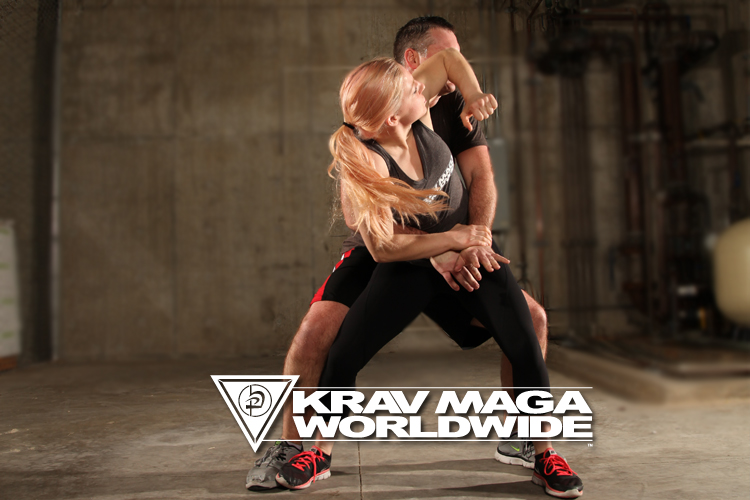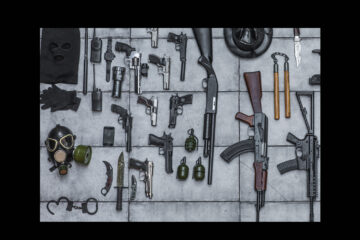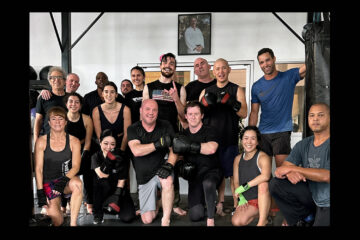Six must watch videos for better Krav Maga

Krav Maga Worldwide® self-defense is a system that was designed to bring people to a high level of proficiency in self-defense in a short period of time. It is intentionally structured to be easy to learn and easy to recall under stress. However, like anything, it takes practice to develop mastery. Building Krav Maga skills for effective self-defense involves focusing on details that could mean the difference in fighting back, winning, and going home safe.
Our online Academy has a huge library of online training courses that are available 24/7, and we post a lot of training tips on our social media outlets like Instagram and YouTube that you can check out anytime. The videos below are some of the most important tips and technique pointers for improving your overall Krav Maga skill level based on common mistakes that instructors at our HQ Training Centers in Los Angeles help students correct.
Striking power
Krav Maga Worldwide® self-defense is rooted in the concept that we will be defending ourselves in a violent encounter. We will not be initiating or provoking an encounter. That being said, students must develop power in striking techniques or “combatives” in order to effectively do damage to someone who would do damage to them. Krav Maga Worldwide® self-defense teaches students to strike with the hands, elbows, knees, legs, and more.
There’s a common misconception that when striking with the hands (i.e. throwing straight punches or palm heel strikes) the power in those strikes comes from the arms and shoulders. Check out the video below to see how punching power really works and is developed.
Bear hug defense
At the Krav Maga Worldwide® HQ Training Centers in Los Angeles, one of the things that many students talk about regarding what motivated them to start training is a fear of “getting grabbed from behind”. It’s a very valid concern because, although Krav Maga training will help you develop situational awareness, there’s just no way to stop someone who is able to sneak up from behind. The risks and opportunities can certainly be minimized but nobody has eyes in the back of their head.
It’s important to recognize that getting grabbed or put in a bear hug-type hold isn’t necessarily super dangerous in and of itself. The danger, and the real threats, come into play if the attack continues into something like an abduction scenario or being slammed to the ground. Check out this video below to see some important details about making a defense vs. bear hug from behind.
Choke with a push
One of the first things that students in the Krav Maga Worldwide® self-defense system learn is how to defend themselves if someone grabs their neck with both hands and chokes them. Chokes are often emotionally charged attacks that involve trying to both damage and intimidate the target. They are often seen in domestic violence situations. Chokes are incredibly dangerous because they can cut off both the target’s air supply as well as the flow of blood to the brain. When the choke involves getting moved somewhere, be it against a wall, into a vehicle, or just to another place in general, the dynamics become more complicated and the dangers are multiplied.
It’s important to understand what the most efficient and effective technique for fighting back against this sort of attack is…and why. Check out the video below for a breakdown of the defense technique and for some important pointers on how to be the most effective with it.
Fall break
Falling down is dangerous. This is true whether it involves being in a situation where someone is fighting back against an assault or trips or slips and falls in any other type of circumstances. Falling backward is particularly dangerous because of the potential for a person’s body to whiplash and slam their head into whatever surface they are on.
Developing the skills to effectively break a fall in a way that protects the head is practical and important for self-defense and for everyday life. When students learn to fight at Krav Mag Worldwide® certified training centers, they become aware of how important transitions from the feet to the ground are. In terms of self-defense, developing and becoming effective at a “fall break” is essential because it gives the defender a chance to stay in the fight if they are knocked down or fall down. Check out the video below for a breakdown of the fall break technique.
Getting up
Falling down is dangerous. Remaining on the ground during a fight or during an assault while the opponent or attacker is still on their feet is even more dangerous. It doesn’t matter if a person is knocked to the ground, if they fall, or if the encounter or assault starts when the defender is already on the ground, knowing how to get up “the right way” is absolutely essential.
There’s a very slim probability of winning a fight from the ground when the opponent is on their feet. There’s even less probability of getting away from the attacker if they are on their feet and the defender is on the ground. Getting up the right way starts with being in an effective position while on the ground. That means the defender must be in a position which allows them to keep one leg in-between themselves and the attacker so they can kick if the attacker closes distance. It also means the defender must be in a position that protects their back or “dead side” where strikes against a standing attacker will be far less effective.
Getting up from the ground the right way or making a “technical get up” starts from an effective position and involves moving away from the attacker and creating more space. This technique is one of the most difficult things for students in Krav Maga Worldwide® self-defense Level 1 to master because it’s a movement most people just aren’t used to. However with a little bit of practice, and some of the tips and pointers in the below video it becomes easier to understand and to master.
Stick defense
When students advance through the Krav Maga levels while training at Krav Maga Worldwide® certified training centers, they apply the same principles learned in lower levels to increasingly complex and dangerous scenarios. Defending against armed attackers are some of the most dangerous scenarios that we deal with. An attacker armed with a stick or a blunt object is particularly dangerous because of the increased range of the attack and general unpredictability of the direction of the attack. The attacker could be swinging from overhead, from the side, backhanded, etc.
One of the things that students must be able to do in order to develop the most effective self-defense against stick wielding attackers is to incorporate movement and footwork along with upper body techniques that stop the attack and prevent an ongoing attack. A defense against an overhead swing with a stick or blunt object is a perfect example of how movement and footwork along with a redirecting technique with the arm will protect the defender and put them in a position to fight back, win, and go home safe. Check out the video below for important pointers and technique tips on defending this kind of attack.
The Krav Maga Worldwide® self-defense system was designed to be easy to learn and to teach people to become effective at self-defense in a short period of time. The system is much broader and in-depth than what can be covered in just six videos. These six videos deal with common mistakes that instructors see in particular when teaching these important techniques.
Incorporating the “fix-it tips”and pointers into your training will help you improve your overall level of effectiveness in Krav Maga Worldwide® self-defense. However there is nothing better than consistent training at a certified Krav Maga Worldwide® training center for developing and maintaining skills that will make you safe and strong.
We have certified training centers all over the world. If you are looking for “krav maga training near me” check out the searchable map of our certified training center locations here or give us a call at 800-572-8624.






